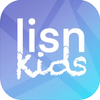Peaceful Activities After Bath Time: How to Help Kids Wind Down Gently
Why After-Bath Time Matters More Than You Think
For many families, the post-bath window offers a pocket of calm in the whirlwind of daily routines. The homework is put away, dinner is done (or cooling on the stove), and the bath has washed off not only the grime of the day but often the stress too. What comes next can be more than just pajamas and bedtime—it can be a quiet opportunity to help your child regulate, recharge, and reconnect.
Especially for children aged 6 to 12—those wrestling with school pressures, reading challenges, or emotional overload—those final moments before bed carry far more weight than we sometimes realize. This is when their bodies are naturally winding down, and with gentle guidance, so can their minds.
Building a Gentle Landing Zone for the Day
After a warm bath, your child’s physical state is primed for rest—their body temperature begins to drop, cues for melatonin production kick in, and their muscles begin to relax. But for children who struggle with dysregulation, anxiety around school, or residual academic stress, the nervous system might still be in high alert mode.
That’s why what you do after the bath is as important as the bath itself. Creating a buffer zone—a ritual of calm activities—can act as a gentle emotional landing strip. The goal isn’t to fill this time with lessons or productivity; it's to support quiet connection, inner peace, and emotional safety.
Activities That Nurture Calm Without Pressure
Let’s take a look at a few intentional, low-stimulation options that can ease your child into rest—not as a checklist, but as inspiration for you to shape around your unique family rhythm.
Mindful Drawing or Coloring
After the bath, invite your child to the table with some paper and colored pencils or crayons. Set soft lighting and play instrumental music—or let the room be quiet. The key isn’t what they create, but how the hand movements, colors, and repetitive focus can soothe the brain. Many children find this kind of quiet creative time more calming than we might expect.
Audio Stories for Deep Listening
If reading can feel tiring or stressful—especially for children experiencing learning struggles—audio stories can offer a gentle, screen-free alternative. The LISN Kids app for iOS and Android provides a library of original audiobooks and series specifically created for children ages 3 to 12. Their calm, imaginative storytelling can be the perfect backdrop to snuggling into bed or lying quietly under a blanket.

If you’re curious about how stories can help your child decompress emotionally, you might enjoy our piece on soothing stories to help children relax after a stressful day.
Stretching or Gentle Movement
Sometimes, a child’s body holds onto tension even when it’s bedtime. A few minutes of soft movement—think slow stretching, toe touching, or even guided “animal stretches”—can help release nervous energy. Keep the lights dim, and encourage deep breathing alongside movement. This is often more inviting than abruptly moving from a bath to total stillness.
Giving Space for Connection
For some children, post-bath calm isn't about activities at all—it's about finally finding space for emotional connection after a busy or overwhelming day. You might sit side-by-side in bed, wrapping up with a simple question like, "What was one moment today that made you feel strong?" or “Was there anything hard today you want to leave outside before sleep?”
This doesn’t have to become a deep conversation every night—it’s about offering emotional safety and signaling: “I have time for you. You are safe here.” If your child struggles with overstimulation, you might find value in our guide on helping children calm down when they’re overexcited.
Creating Consistency Over Perfection
It’s okay if calm routines don’t go the same way every evening. One night might involve a quiet craft, the next, a soft giggle under the blankets. The power isn’t in repeating the same thing perfectly—it’s in creating expectations of peace, warmth, and safety after bath time.
If your child resists sleep or tends to get wound up at bedtime, it may also be helpful to look at their full evening rhythm. Our detailed article on creating a calm bedtime routine offers more structure for those final hours of the day.
Starting Small, Staying Present
You don’t need an elaborate routine or expensive materials to help your child transition gently into sleep. A wet head wrapped in a towel, a lap to curl into, soft light, and your steady voice—that’s often enough. Start small. Choose one calm post-bath ritual to try for a few nights. And most importantly, notice how your child responds, not just how they behave. Are they releasing tension more easily? Do they fall asleep a little faster? Is their body more at ease?
And remember: the aim isn’t to control the evening; it’s to soften it. You’re not just helping them sleep. You’re helping them let go of the day.
To anchor the entire after-school to bedtime transition, many parents find comfort in establishing a consistent wind-down flow. You might find additional inspiration in our piece on creating a calming after-school routine and another on strategies for children who struggle to fall asleep.
